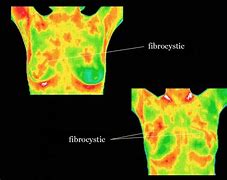
9
FibroCystic Disease
Mammary fibrocystic changes or mammary fibrocystic disease are a state of mammary tissue that affects about 30 to 60% of women. This disease is bumps , which can sometimes cause discomfort, and often periodically in connection with the effects of the hormone of the menstrual cycle is characterized. The name, the more this complication include mastitis, chronic cystic (English: chronic cystic mastitis) and dysplasia job (English: mammary dysplasia) can be. Because a disorder is very common, some authors have argued that it should be \"disease\" called, while others feel that the criteria for a disease, there is. Of course, this is not a classic Fermi disease of mastitis (inflammation of the breast).
< br>most women have fibrocystic changes and have no symptoms needing treatment, but close follow-up may be recommended. Breast fibrocystic disease is very common in women. 30% to 40% of women from puberty to 50 years of age suffer from this complication. Since the disease is very common, it is no longer regarded as a disease and there is usually no concern about it. This disease frequently after menopause would be removed (unless the hormone therapy with estrogen done)
condition changes, fibrocystic breast tissue, washcloth-like and lumpy in the breast characterized. These masses are soft and with smooth edges and are usually freely moved according to adjacent structures. Bumps can sometimes be hidden by irregularities in the breast that are associated with conditions. The protrusions are often manifested in the upper part, the outer part of the breast (closest to the armpit). Women with fibrocystic changes may experience pain in their breast on an ongoing or intermittent basis. Breasts and nipples may be itchy during this state.
symptoms are tied with periodic trends close to the menstrual cycle. These symptoms tend to soar before each period and then decrease. The breast may feel full and swollen at the height of the peak. No complications and consequences associated with lactation have been discovered in this disease. There is pain in the whole breast, especially just before the onset of menstruation. Lumps are usually present in both breasts. There may be only one mass, but there are usually several mass. These masses are often enlarged before the habit and shrink after it....


